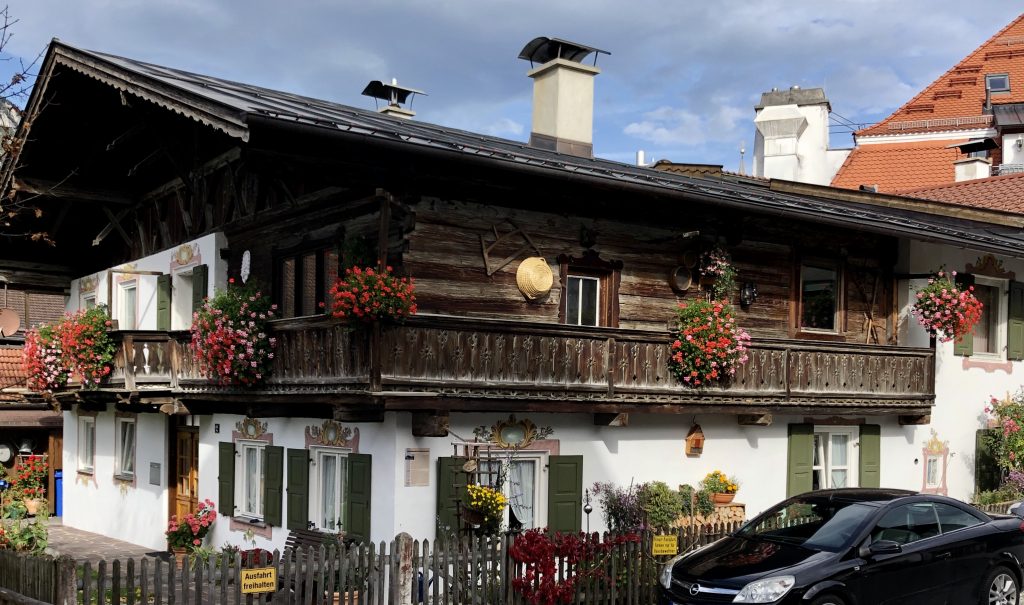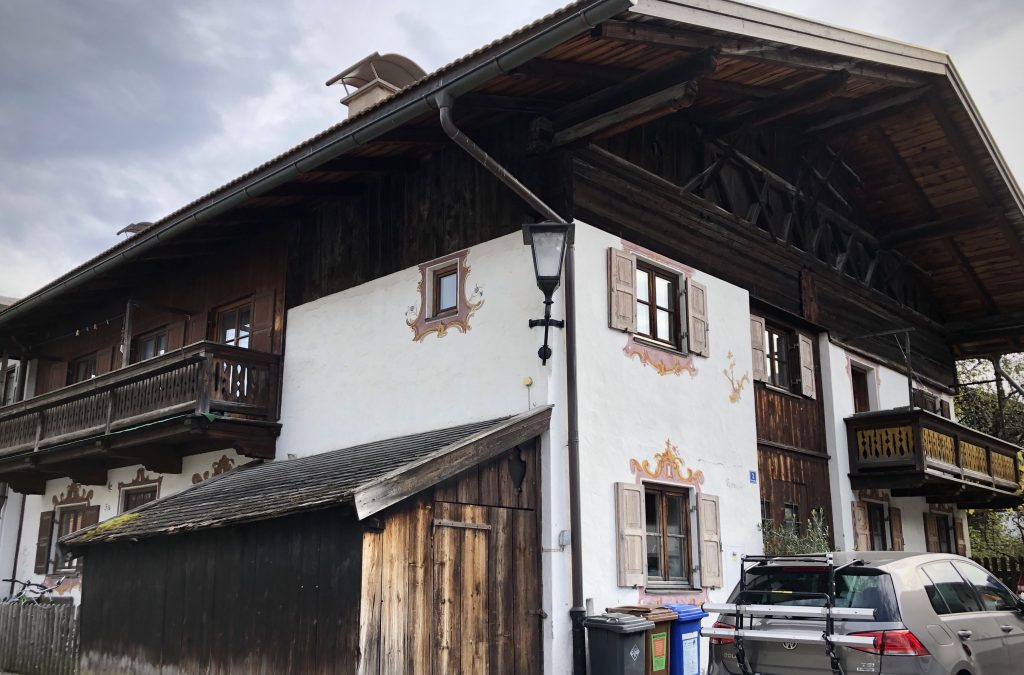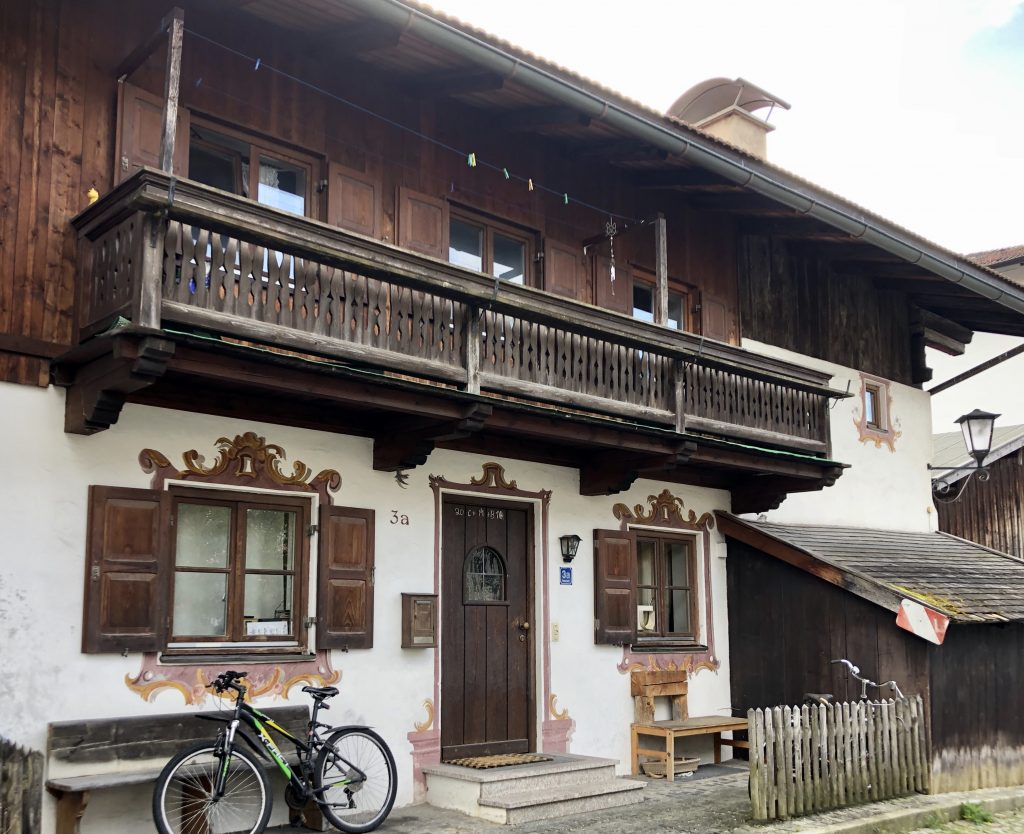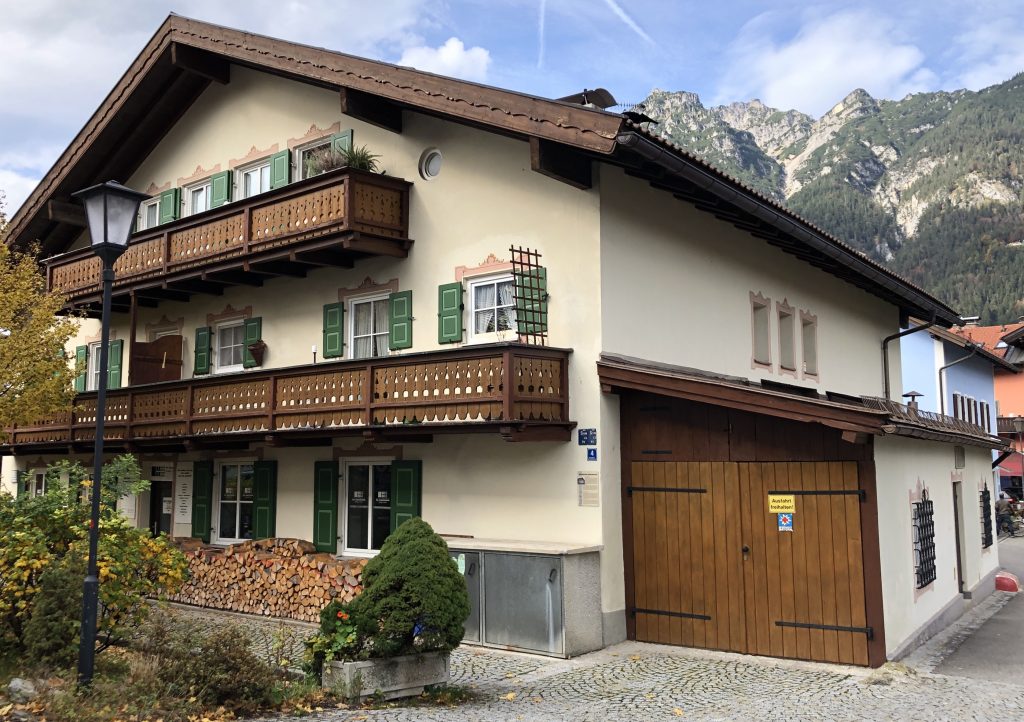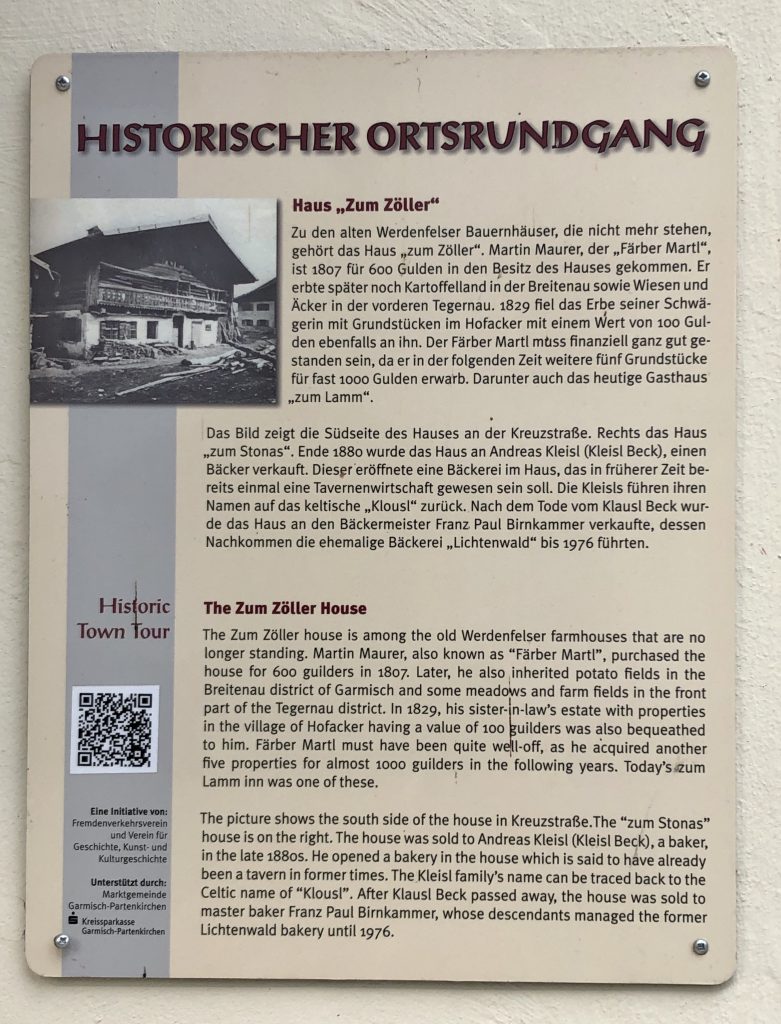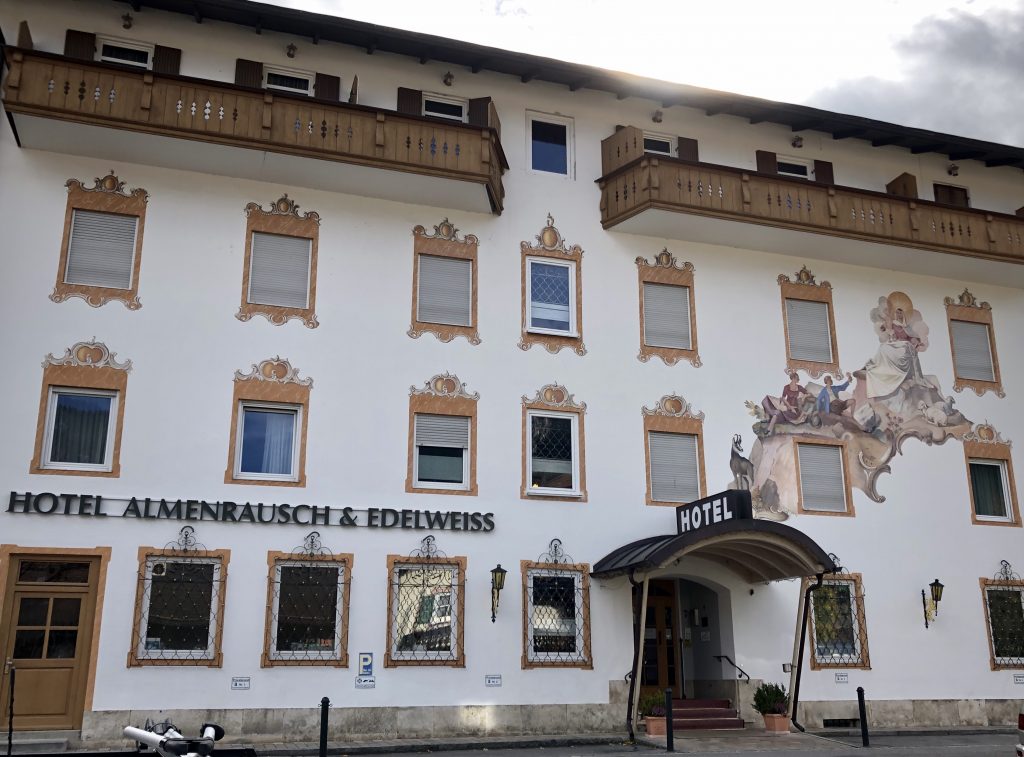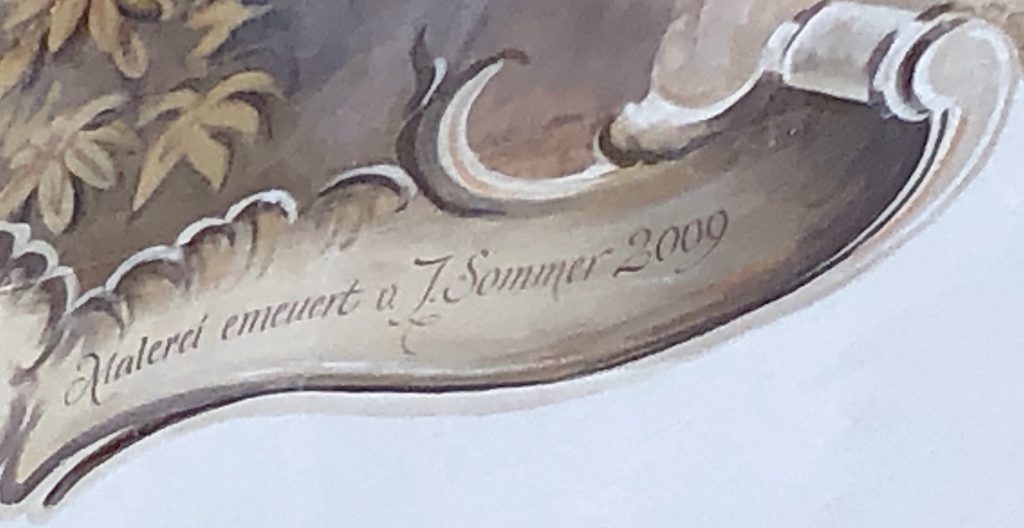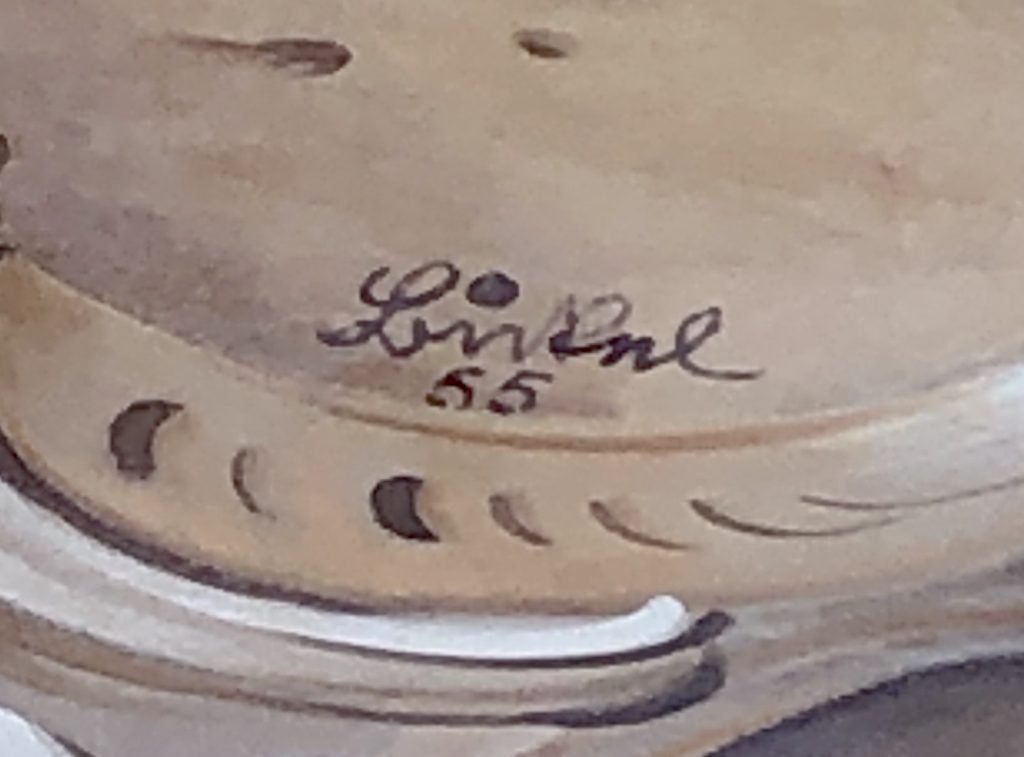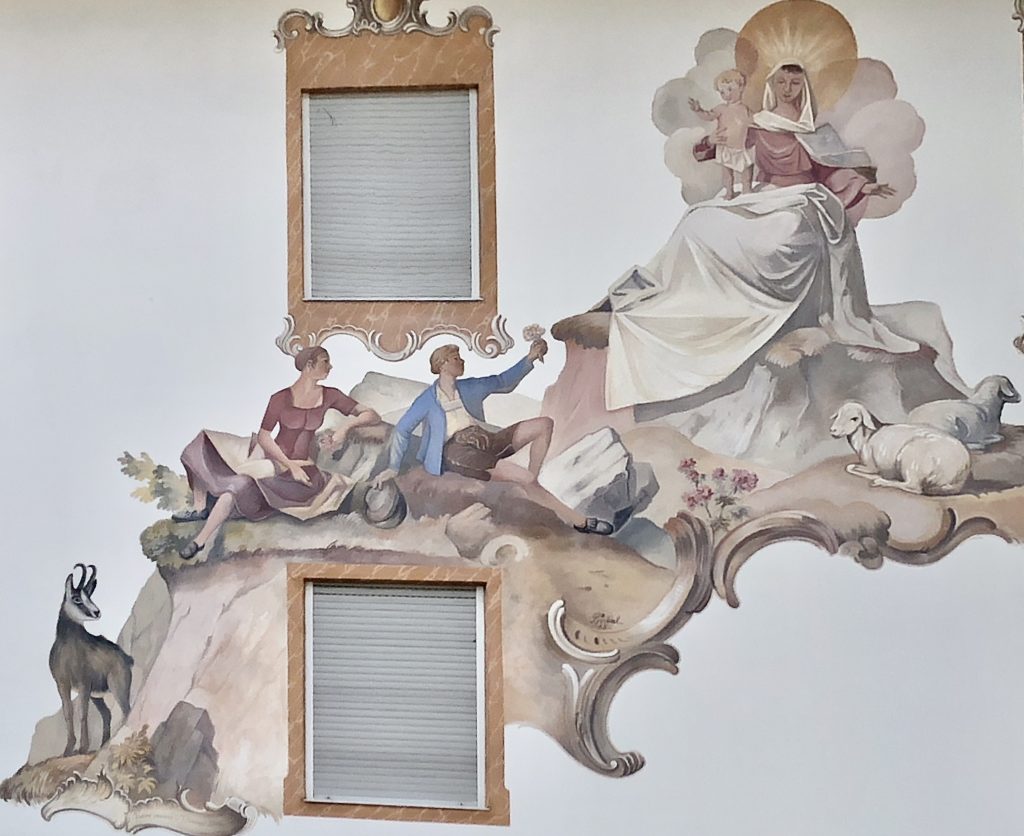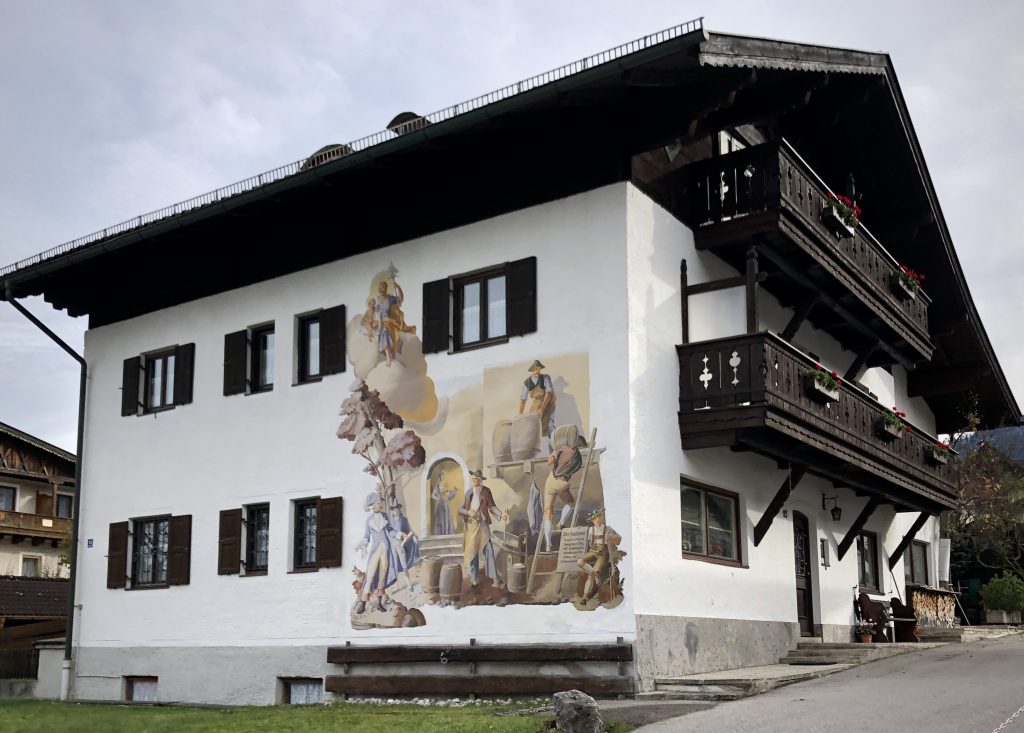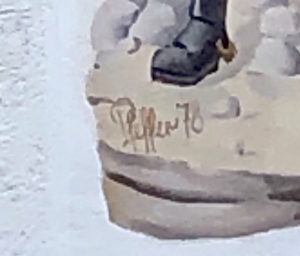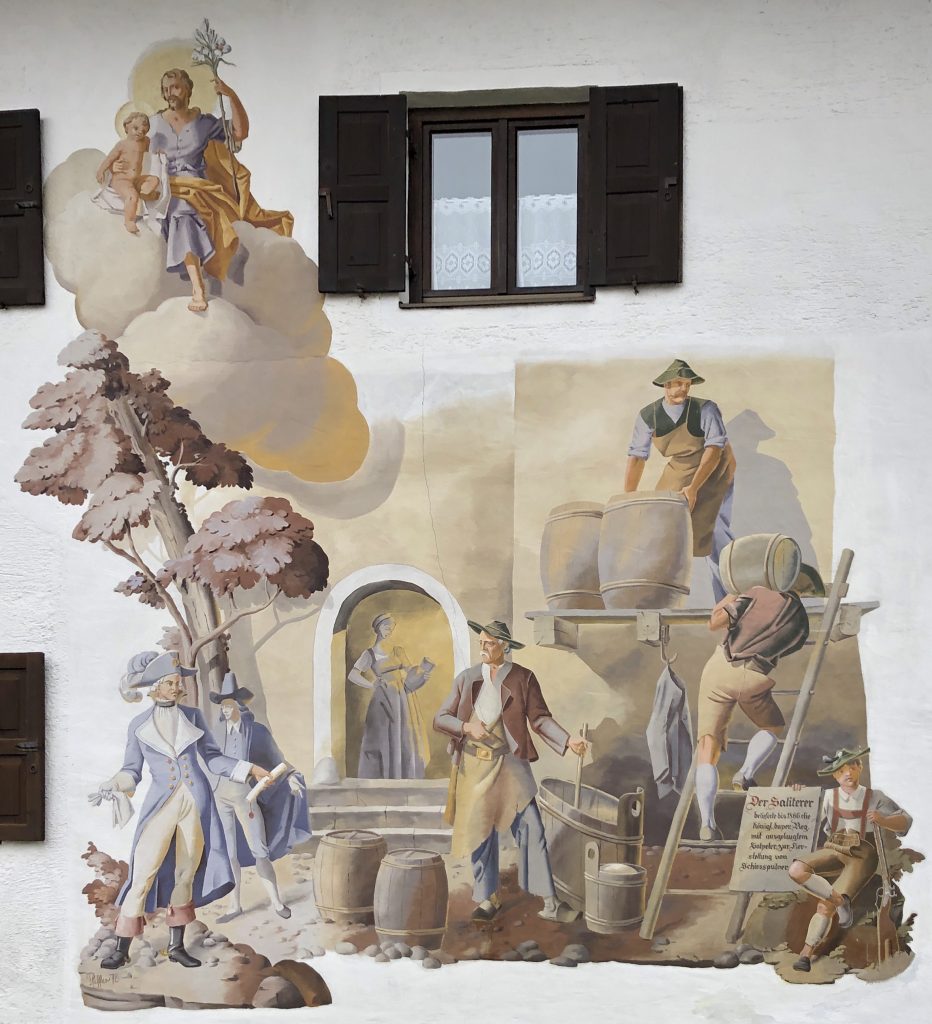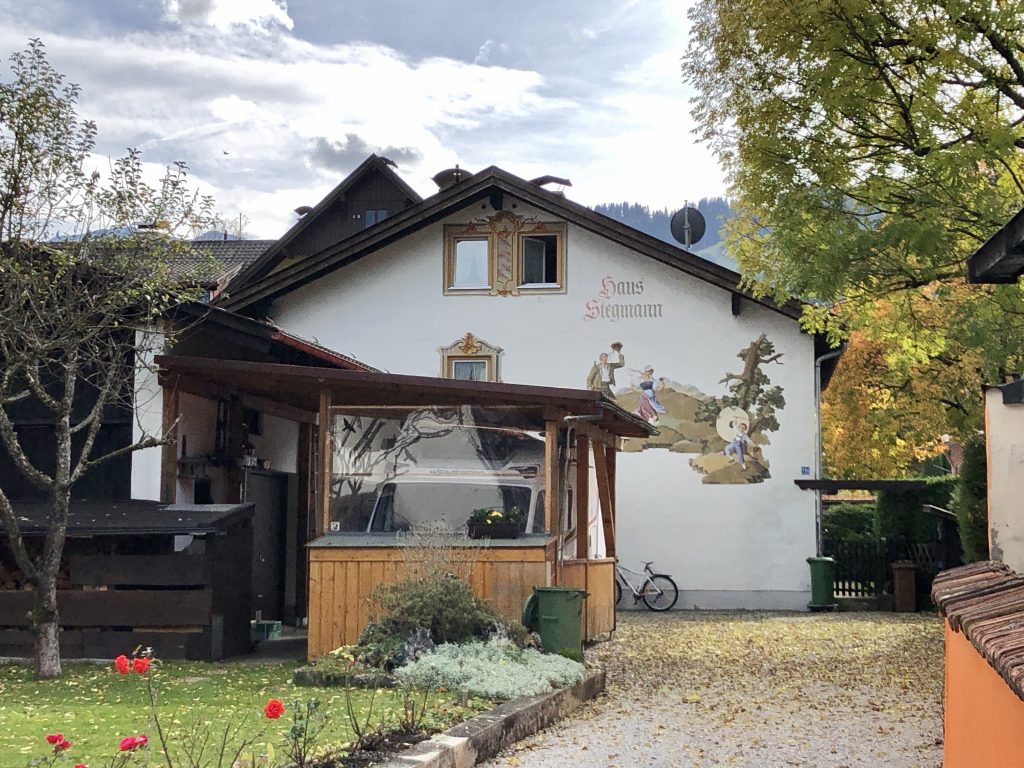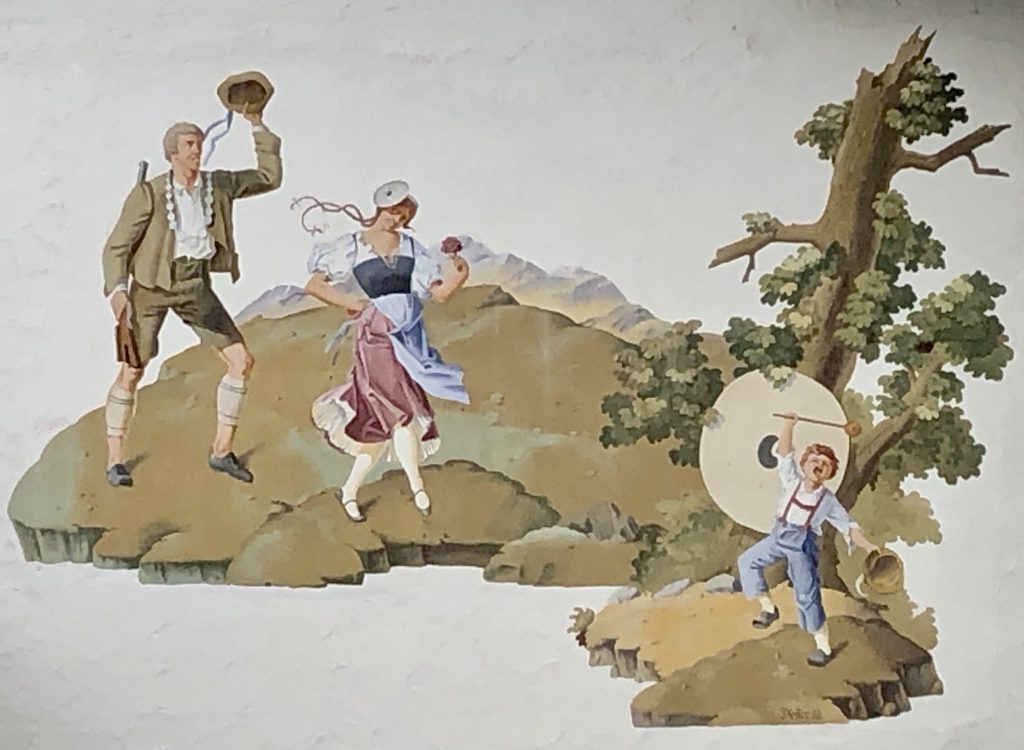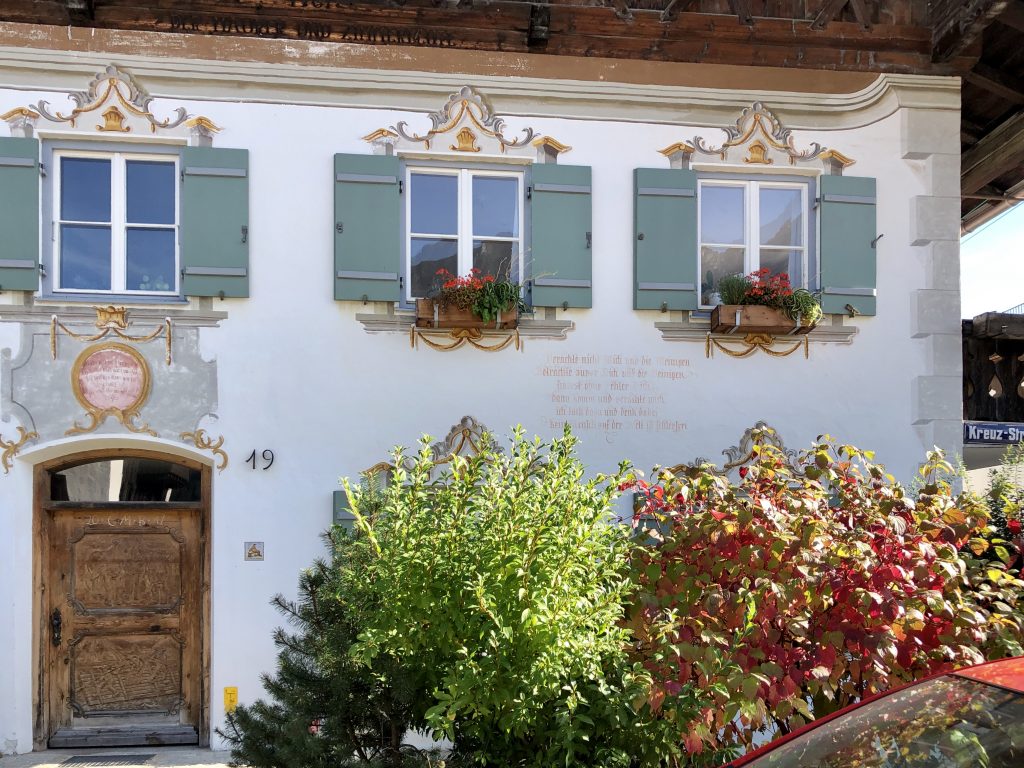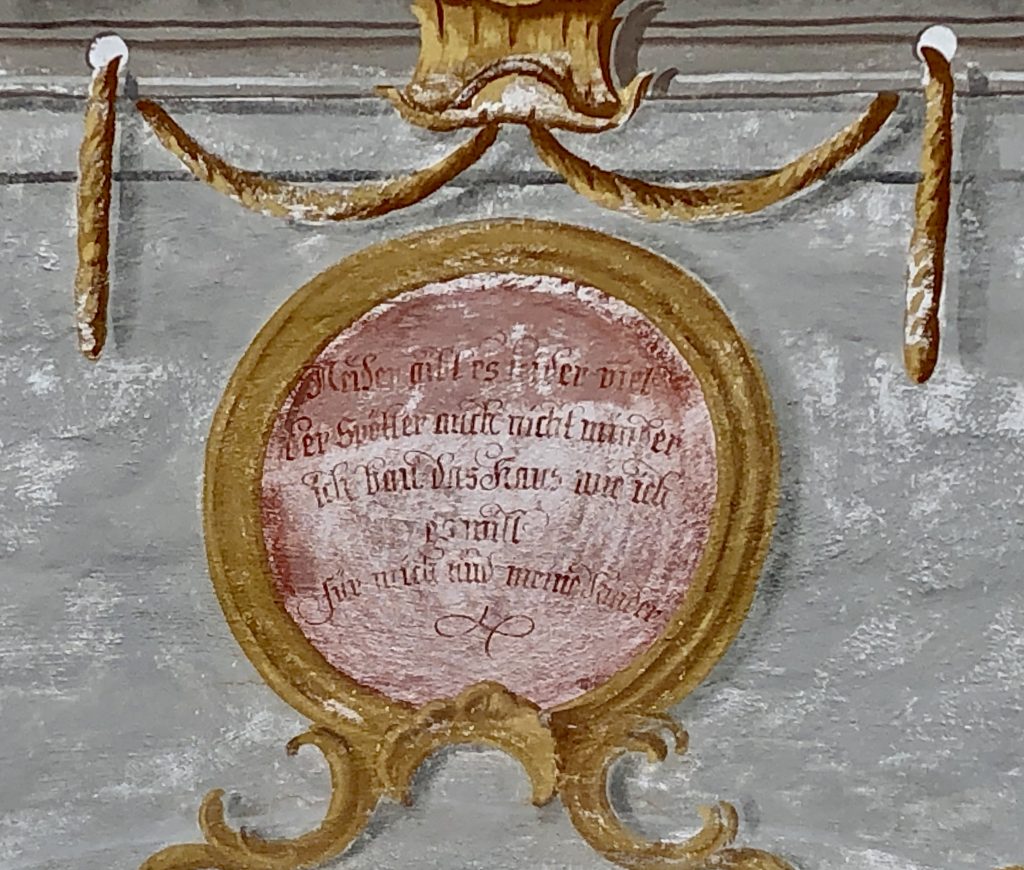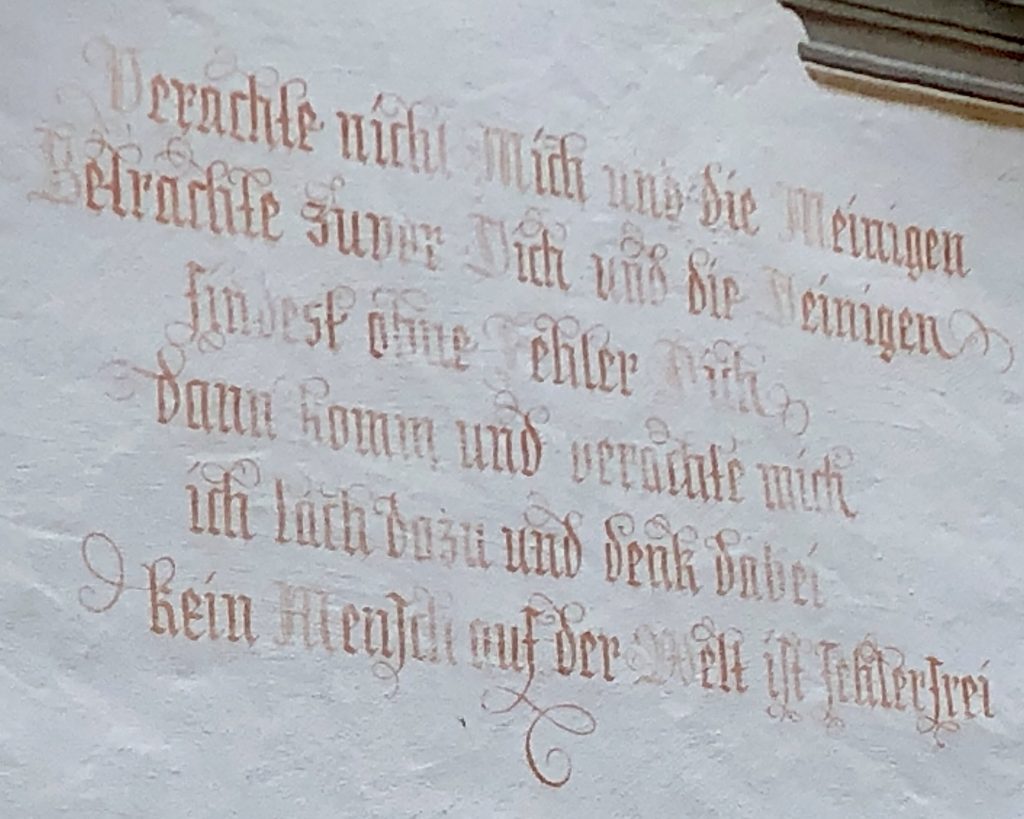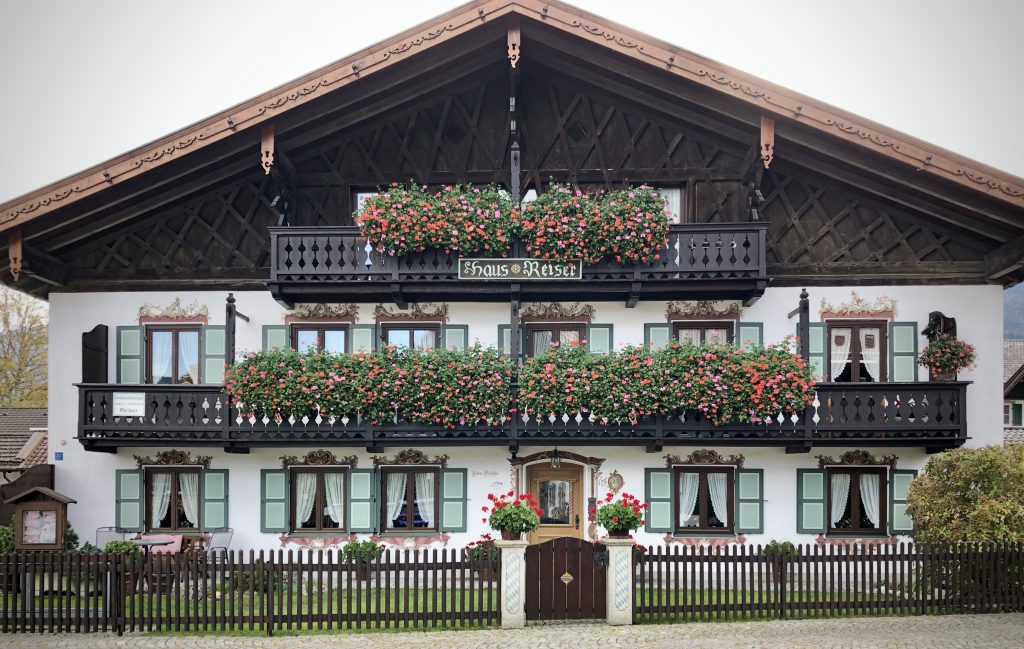The boy painted in the bottom right is holding a sign that explains that this lüftlmalerei depicts “Der Saliterer ” — or “the Saltpeter-er” — and that this location supplied the Royal Bavarians with leached saltpeter for the production of gunpowder until 1866.
“Niter,” or potassium nitrate, is one of several nitrogen-containing compounds collectively referred to as “saltpeter” (from the Latin Sal Petrae, or “rock salt”). Between 1500 and 1800, refined saltpeter was one of the major ingredients in “black powder,” or gunpowder. In Bavaria, raw niter was collected from the white crust that formed on the pens and fields around barns — a byproduct of the interaction between nitrate-rich animal manure and bacteria in the soil — and refined by boiling it with wood ashes in water. By the mid 1700s, given the number of wars in the world, the royal demand for gunpowder was so high that the walls and floorboards of barns and farmhouses were regularly removed in order to be processed into saltpeter — at great cost and frustration to the farmers.
Here, you can see a Bavarian Saliterer in the center of the lüftlmalerei boiling saltpeter in a barrel, men storing barrels of the refined gunpowder ingredient in the back, and representatives of the Bavarian nobility on the left. Above, Saint Joseph and the infant Jesus look on.
In the Catholic Church, Saint Joseph is not only venerated as a carpenter, but also as the patron saint of all workmen. Here, the staff he is holding in his left hand is a symbol associated with an ancient legend that he was so chosen from among other men to be the husband of the virgin Mary, and thereby father of the infant Jesus, by the blossoming of his staff like a lily.
This legend can be traced to several apocryphal (non-canonical) gospels: the Protoevangelium of James and the Gospel of Pseudo-Matthew. In both of these accounts, a dove flies forth from the rod belonging to Joseph, indicating that he is to be Mary’s husband. A medieval (13th or 14th century) compilation of stories of the saints, The Golden Legend, tells the tale of the marriage of the Virgin, drawing from these apocryphal gospels and providing us with the version that describes flowers blooming forth from the stick rather than a dove. Over the centuries, this scene has been depicted in sacred art, both paintings and sculptures, as it is here, by showing Joseph holding a staff from which flowers are blooming.
